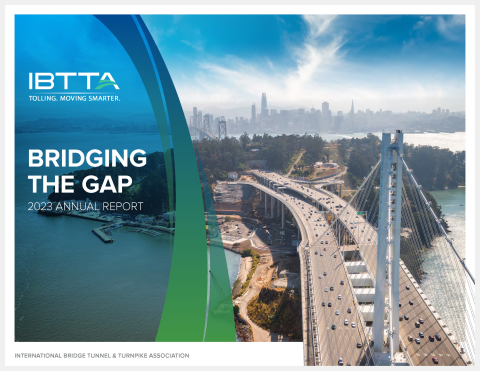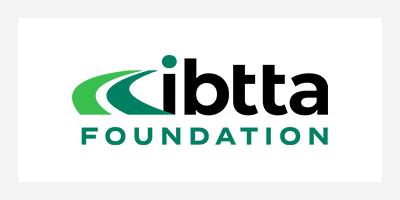- Home
- Putting Technology Into Focus For Road Safety
Voices
Putting Technology into Focus for Road Safety


Last week, the U.S. Department of Transportation (USDOT) unveiled its long-term roadmap for accelerating vehicle-to-everything (V2X) connectivity to enhance transportation safety. IBTTA applauds the initiative to establish a deployment-focused plan for these life-saving technologies that looks ahead for more than a decade. This plan not only aims to reduce traffic accidents but also envisions a future where roads are smarter, vehicles are more connected, and lives are saved through real-time communication and awareness.
This significant milestone is the result of collaboration among key stakeholders, including ITS America, AASHTO, and the OmniAir Consortium. During IBTTA’s initial discussions with Shailen Bhatt, following his confirmation as head of the Federal Highway Administration (FHWA) last year, the importance of toll operators in accelerating V2X deployment was a priority topic of mutual interest.
Aspirational Long-Term Goals
USDOT’s vision for long-term deployment is aggressive and aspirational. Within the first four years, the plan targets V2X deployment on 20% of the National Highway System (NHS) and V2X-enabled signals at 25% of intersections in the top 75 metro areas by 2028. Moreover, the plan seeks to have at least two automakers committed to producing V2X-capable vehicles by the 2028 model year. By 2036, the goals are even more expansive, aiming for 85% of the NHS to be equipped with V2X and 75% of signalized intersections to be V2X-capable. The plan envisions twenty V2X vehicle models available by 2036.
Technology In Vehicles and Over Networks
V2X offers great promise to bring safety advantages into vehicles through manufacturer-based systems and aftermarket devices. Onboard technologies can continuously exchange structured messages to and from vehicles, allowing full awareness of real-time conditions in the travel path, including in conditions with constrained visibility. Imagine the vehicle having full awareness of its surroundings at night, in dense fog, or around blind corners. Network-based V2X applications can augment these capabilities with communications over longer distances using conventional communication networks. The network technologies are useful for providing real-time information on traffic and road conditions.
Benefits Overshadow Deployment Complexity
Accelerating V2X capabilities won’t be easy. It will demand participation among a variety of government and private interests, each with distinct motivations and objectives. These complexities affect timeframes, budgets, policies, and partnerships. However, the benefits of faster deployment far outweigh these challenges.
V2X communications can offer all road users dramatically improved information about possible risks in a variety of traffic situations, helping to prevent crashes and protect vulnerable individuals. Furthermore, the information exchange enabled by V2X can optimize system performance, enhance reliability, improve mobility, facilitate better goods movement, and yield positive environmental outcomes.
Gaps Still Need to Be Filled
The USDOT plan does not propose specific policies, legislative actions, and regulatory frameworks. Instead, it envisions federal “seed money” to catalyze deployment, leaving much of the work to states, businesses, industry leaders, and regulators. This underscores the need for IBTTA to thoroughly understand the tolling industry's readiness and priorities for engaging with the federal program.
Many public agencies lack the expertise and frameworks needed to manage the technical challenges of V2X deployment. Additionally, the legacy systems can slow the adoption of new technology, and securing adequate funding is always a challenge. While federal funding for pilot projects is helpful, it doesn't solve all the problems of widespread deployment. Building organizational capacity and creating environments that encourage private engagement and partnerships are essential throughout the deployment process from planning and design to construction, operations, and maintenance.
Another challenge is the limited spectrum available for V2X communication. Transportation safety solutions will rely on the remaining 30 MHz of the 5.9 GHz band, but they will also need to use other parts of the spectrum and other communications approaches. Ensuring a cohesive and interoperable ecosystem will require effective standards, testing, certifications, and protections against interference. Federal programs and rules may play a useful role in addressing these issues.
IBTTA remains committed to improving road safety through technology. We encourage members and partners to share their thoughts on V2X deployment strategies and the needs of tolling organizations. Your input will help shape the future of transportation safety and may influence the next federal transportation program reauthorization. Please reach out to Mark Muriello at [email protected] with any information or suggestions.

Mark Muriello is IBTTA’s Vice President of Policy & Government Affairs. Mark has a distinguished record of accomplishment in highway operations, tolling, finance, transportation planning, and policy. Mark advocates for tolling and road pricing interests at the federal, state and local levels of government, and works with a a comprehensive array of industry organizations and stakeholders. Mark actively leads IBTTA’s agenda in government affairs, policy, lost revenue recovery, sustainability and reliance, climate action, and alternative transportation revenue sources.
Mark has more than four decades of experience in transportation and public finance, covering tolling and highway operations, bridges, tunnels, rail, bus, and marine terminal facilities, as well as in the electric utility industry. As the former Deputy Director of Tunnels, Bridges and Terminals for The Port Authority of New York and New Jersey, Mark oversaw the operations, maintenance and planning for the agency’s six tunnels and bridges and two interstate bus terminals that connect the New Jersey and New York City. Mr. Muriello served on the International Bridge, Tunnel and Turnpike Association’s Board of Directors while at the Port Authority and in a leadership capacity in a number of industry and national transportation organizations, including the E-ZPass Group, the Transportation Research Board, the OmniAir Consortium, and the Eastern Transportation Coalition.
Joining IBTTA connects you to a global community of transportation professionals, offering unmatched opportunities for networking, knowledge-sharing, and collaborative innovation in the tolling and transportation sector.
Follow IBTTA on social media for real-time updates on transportation trends and collaborative opportunities.





